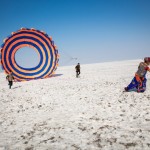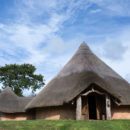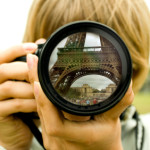Taking portraits might seem simple enough, but it isn’t.
Sometimes it just happens automatically but other times it can be painful to get a decent shot. Whenever you’re working with an active subject, things can get complicated. Here are some tips and tricks to remember to help you get amazing portraits.
Composition
Rules of thirds and golden ration are just a couple of the most known compositional rules that guide photographers. They have stood the test of time for a reason. These guidelines work without too much effort. For example, the rule of third is quite basic. Just turn on the grid view in your camera so you can see grid lines in the view finder. Compose with the subject inside any of the four intersecting points. That’s it in a very simple form. Keep in mind that these are just guidelines. You can keep using this but ultimately, the goal is for you to explore other kinds of compositions and techniques and not be stuck in a single style.
One more useful thing that most photographers forget is the camera level. Most of the shots are taken at eye-level. There’s nothing wrong with that but if you want to have a different feel from you pictures, try shooting at a different level. People are so used at looking at that angle. By giving them a different view, you can easily capture their attention.
Depth of Field
Getting a deep depth of field is easy enough, just set your camera’s aperture to the highest acceptable value, around f/16. On the other hand, getting a shallow depth of field is not as easy as that. The kit lens of most cameras, 18-55mm, can only go as low as f/5.6 at its max range. The easiest and cheapest way to achieve a shallow depth of field is to get the 50mm f/1.8. F/5.6 compared to f/1.8 might seem nothing but the pictures will tell you otherwise.
The nifty fifty is good and all but there is a drawback of some sort. It is too common. The web is saturated by images taken in the 50mm range and f/1.8 opening. Our eyes get used to that view and it becomes too common. It removes the excitement from the picture in a way. Obviously the way to remedy this is to use a different focal range. This can be quite expensive. A lens with a focal length as same as the kit lens (18-55mm) but with a wider opening (constant f/2.8) is around ten times more expensive. Can it produce ten times better images? It still depends on the photographer.
Go Extreme
With the 50mm being one of the most common focal range in use, it’s going to be hard to differentiate your images unless you use a different focal length. One technique is to go extreme with your range. Use an ultra-wide angle lens or a telephoto lens to get portraits. This is a very exciting approach to portraits since this can either work well or be outright ugly.
The UWA is most commonly used as a landscape lens. Distortion will be noticeable when shooting people so try to frame your subject in the middle. If not possible, this can be remedied in post-processing but don’t rely on this to save your shots. It’s better to get the perfect shot in camera than in post.
Telephoto lenses are commonly used in weddings, studio and sports. It’s quite uncommon to use a focal range of greater than 100mm for street portraits because this is severely limiting. Others use walk-around lenses (18-55mm,24-70mm,18-200mm, etc.) to have more access to various focal lengths. You can’t control your subjects outside so having flexible range is ideal. So why use a telephoto? This can really isolate your subject, giving that studio look outside. This is caused by the narrow depth of field in those focal lengths.
Use the Background
You’re not shooting inside for a reason. If you want to have a plain background, go back to the studio. Use the colours outside to your advantage. Frame your subjects with the background in mind.
On a related note, keep in mind of the surroundings for pick pockets. Be safe and if the worst come, it’s better to lose a camera than to endanger yourself.
Use Flash
Ambient light is associated with street portraits. Adding another light would not be a bad thing. Fill flash would be mostly used in this situation. Sometime ideal lighting isn’t just there and adding a bit of light to fill in the gaps between the harsh shadows can do wonders to your images.






